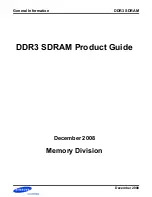
Cluster Planning
29
• Cascading
• Rotating
• Concurrent
Each of these types describes a different set of relationships between nodes
in the cluster, and a different set of behaviors upon nodes entering and
leaving the cluster.
Cascading Resource Groups: All nodes in a cascading resource group are
assigned priorities for that resource group. These nodes are said to be part of
that group's resource chain. In a cascading resource group, the set of
resources cascades up or down to the highest priority node active in the
cluster. When a node that is serving the resources fails, the surviving node
with the highest priority takes over the resources.
A parameter called
Inactive Takeover
decides which node takes the
cascading resources when the nodes join the cluster for the first time. If this
parameter is set to
true
, the first node in a group's resource chain to join the
cluster acquires all the resources in the resource group. As successive nodes
join the resource group, the resources cascade up to any node with a higher
priority that joins the cluster. If this parameter is set to
false
, the first node in a
group's resource chain to join the cluster acquires all the resources in the
resource group only if it is the node with the highest priority for that group. If
the first node to join does not acquire the resource group, the second node in
the group's resource chain to join acquires the resource group, if it has a
higher priority than the node already active. As successive nodes join, the
resource group cascades to the active node with the highest priority for the
group. The default is
false
.
Member nodes of a cascading resource chain always release a resource
group to a reintegrating node with a higher priority.
Rotating Resource Groups: A rotating resource group is associated with a
group of nodes, rather than a particular node. A node can be in possession of
a maximum of one rotating resource group per network.
As participating nodes join the cluster for the first time, they acquire the first
available rotating resource group per network until all the groups are
acquired. The remaining nodes maintain a standby role.
When a node holding a rotating resource group leaves the cluster, either
because of a failure or gracefully while specifying the takeover option, the
node with the highest priority and available connectivity takes over. Upon
Содержание AIX HACMP SG24-5131-00
Страница 2: ......
Страница 10: ...viii IBM Certification Study Guide AIX HACMP...
Страница 12: ...x IBM Certification Study Guide AIX HACMP...
Страница 14: ...xii IBM Certification Study Guide AIX HACMP...
Страница 18: ...xvi IBM Certification Study Guide AIX HACMP...
Страница 24: ...6 IBM Certification Study Guide AIX HACMP...
Страница 110: ...92 IBM Certification Study Guide AIX HACMP...
Страница 133: ...HACMP Installation and Cluster Definition 115...
Страница 134: ...116 IBM Certification Study Guide AIX HACMP...
Страница 160: ...142 IBM Certification Study Guide AIX HACMP...
Страница 200: ...182 IBM Certification Study Guide AIX HACMP...
Страница 216: ...198 IBM Certification Study Guide AIX HACMP...
Страница 222: ...204 IBM Certification Study Guide AIX HACMP...
Страница 226: ...208 IBM Certification Study Guide AIX HACMP...
Страница 232: ...214 IBM Certification Study Guide AIX HACMP...
Страница 240: ...Printed in the U S A SG24 5131 00 IBM Certification Study Guide AIX HACMP SG24 5131 00...
















































